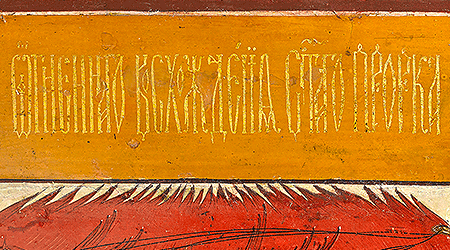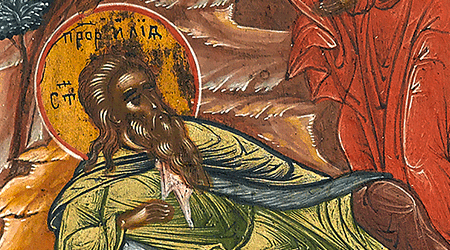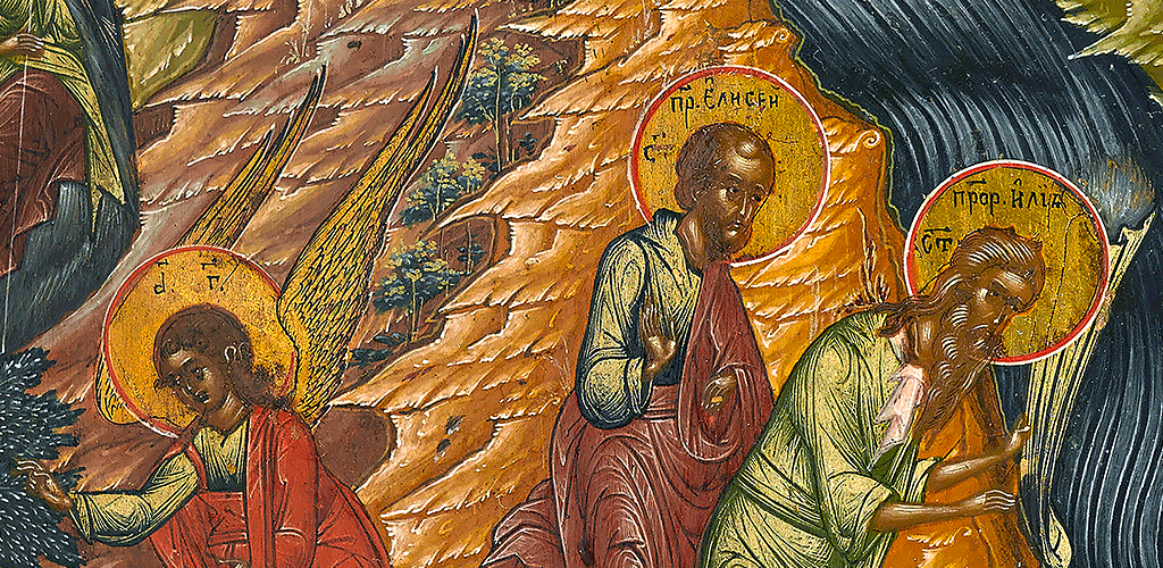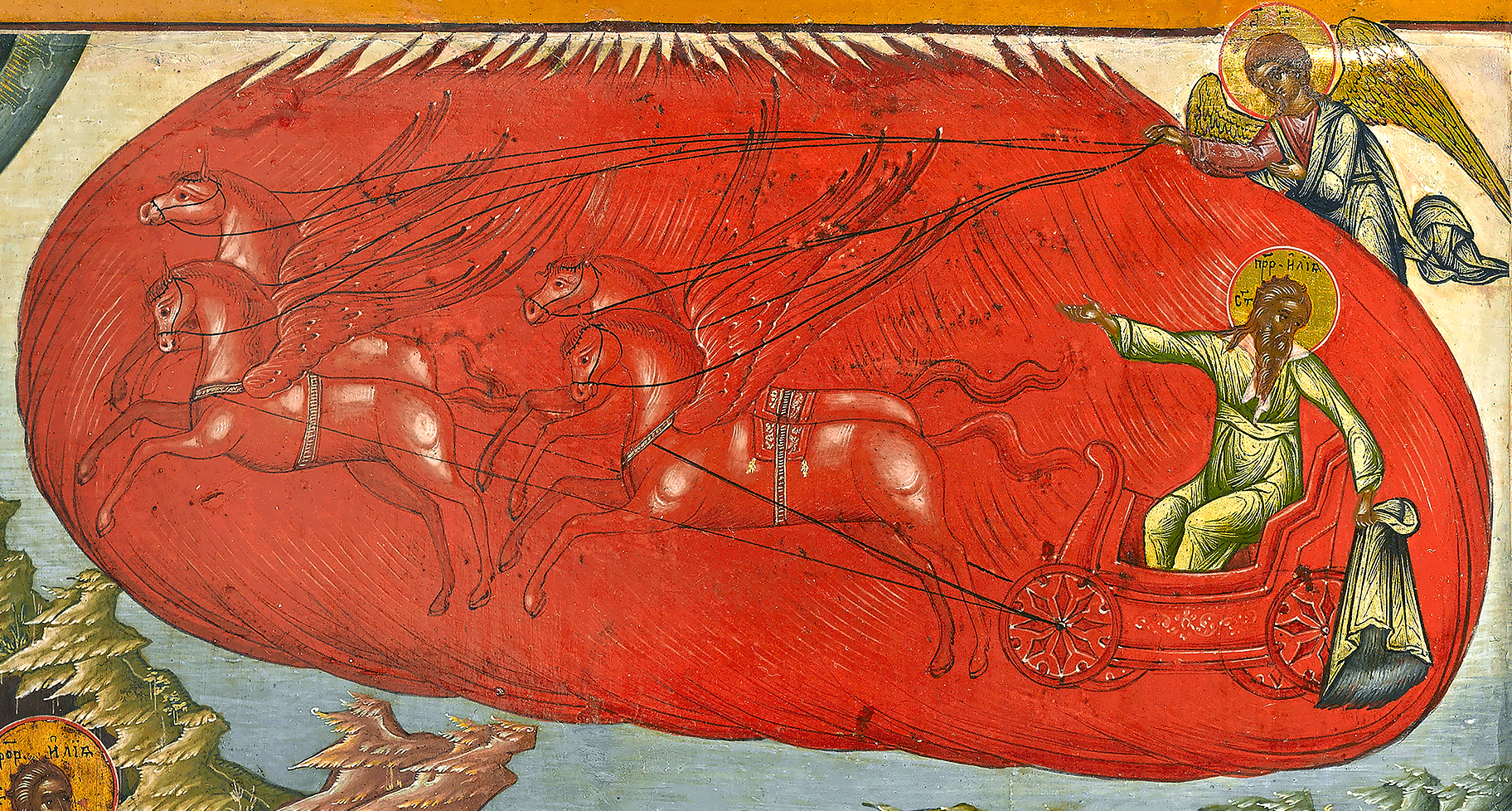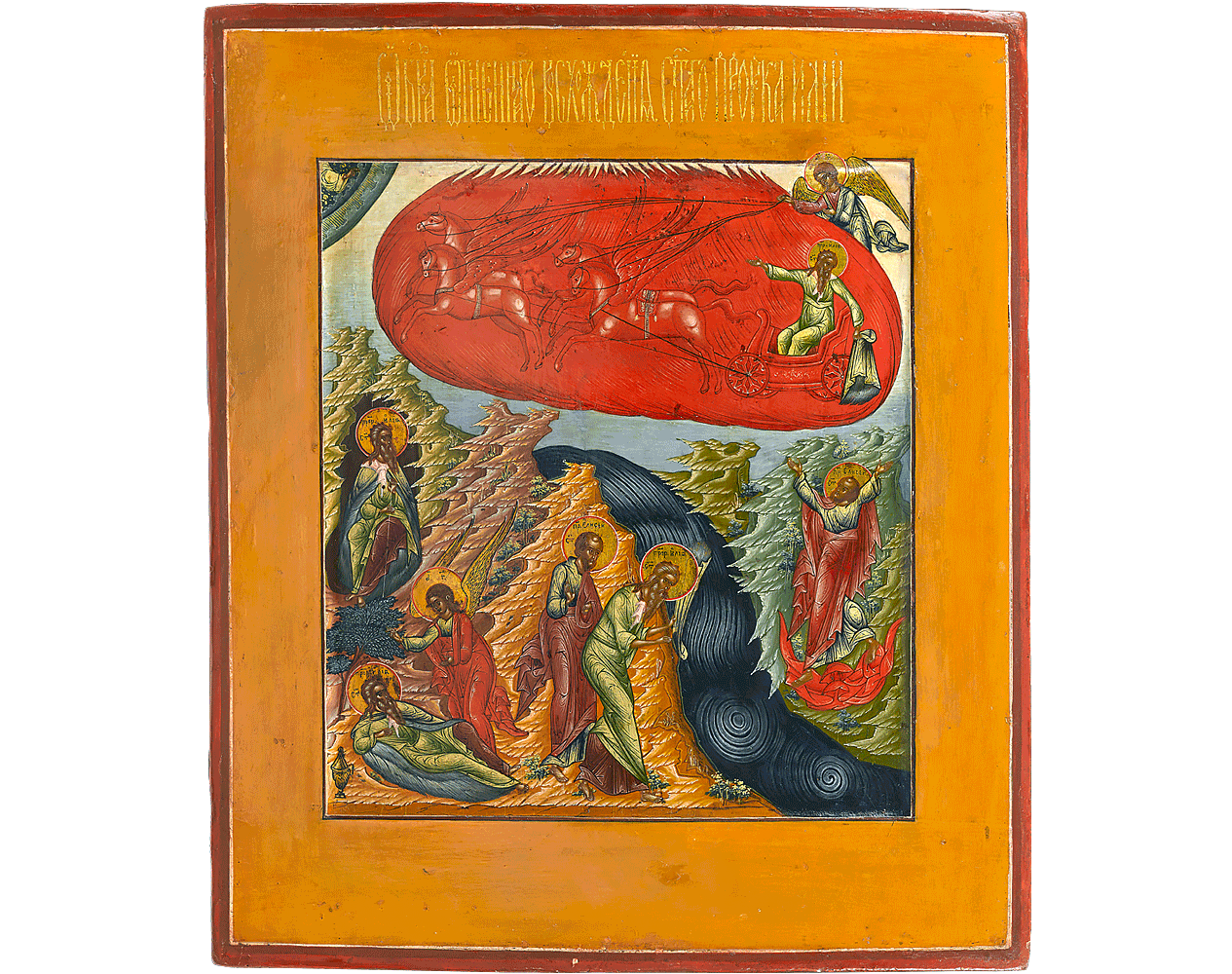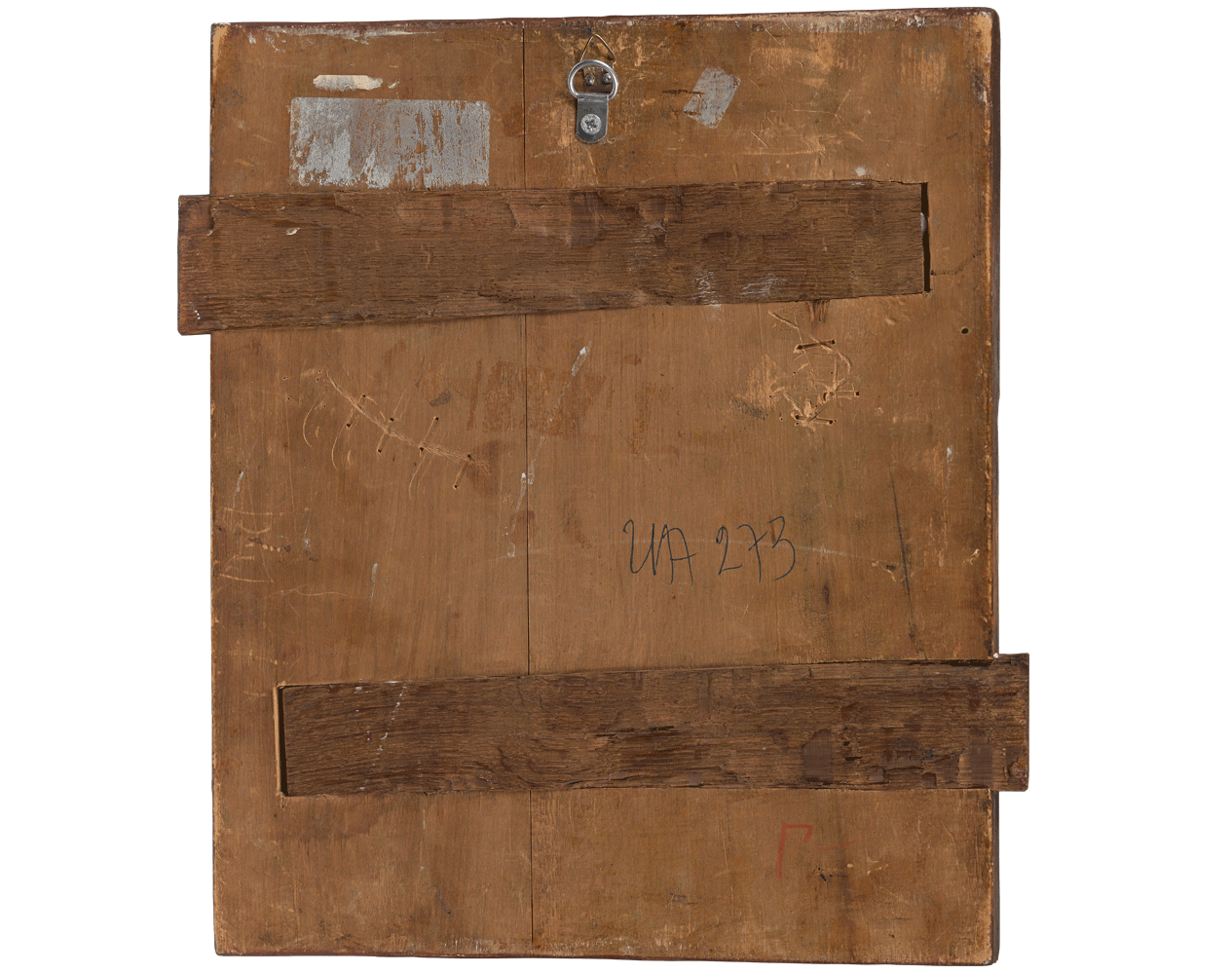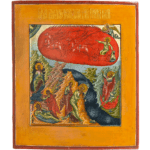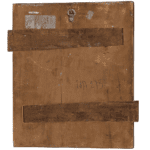The icon is dedicated to the Vita of one of the greatest prophets of the Old Testament Elijah, a man who along with Moses was seen as the forerunner to the miracles and the Resurrection of Christ. In Russia, Elijah was also seen as the saint of thunder, rain and good weather, as well as the defender and guide to the souls of mankind in the afterlife. This is one of the reasons why the most popular depiction of the saint in Russian iconography is his fiery ascension to the heavens.
The composition of the icon follows the traditional scheme, popularised in 16th-century Russian religious art. It includes the scene of the three-year dwelling of the Prophet Elijah in the desert, near the stream of Horaf (3 Kings 17: 1-6). In the upper left-hand corner of the centrepiece, the saint is shown in the cave, being fed by the raven descending from the skies. Below we find the scene of the angel’s revelation to the sleeping Elijah. According to the biblical text, the Prophet – worn out by his prayer for death – fell asleep under a bush. The angel who came in Elijah’s sleep touched the saint and showed his food and drink, warning him of the distant journey that he must undertake (3 Kings 19:5-7). In the centre we see Elijah parting the waters of the Jordan with his mantle. During the journey, undertaken by Elijah and his apprentice Elisha, their path was blocked by the River Jordan. Seeing this, the Prophet took off his mantle (made of sheep or goatskin) and struck the waters, which parted ways and let the two saints pass along the dried riverbed (4 Kings 2:7-8). For his pious life and devotion to God, Elijah was accorded the highest honour: he was taken up – alive, in the flesh – into Heavens on a fiery chariot (4 Kings 2: 1-14). This episode is traditionally represented in the upper third of the centrepiece. Slightly below we see the figure of the Prophet Elisha, who is reaching up – trying to take hold of Elijah’s mantle, as a symbolic sign of the transition of the prophetic gift.
The thick and bright layers of paint of the relatively small icon create an impression of enamel work, decorated with a near calligraphic painting style so cherished by the best Mstera masters of the late 19th century. The iconographers of Mstera embraced the style of the early Russian art nouveau, which combined the decorative aspects of traditional iconography, elements of the pseudo-Russian ornamented style and the innovative implementation of colour.
